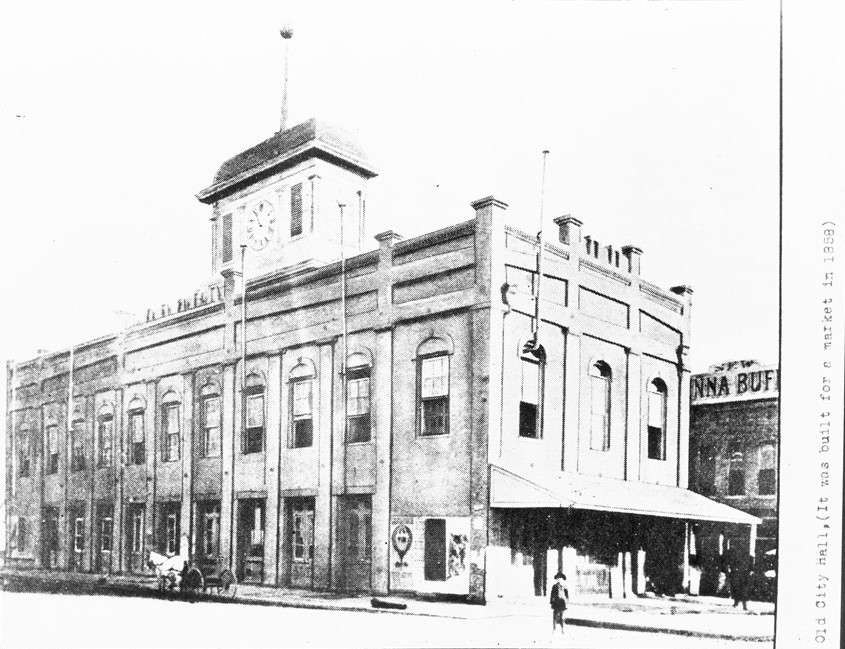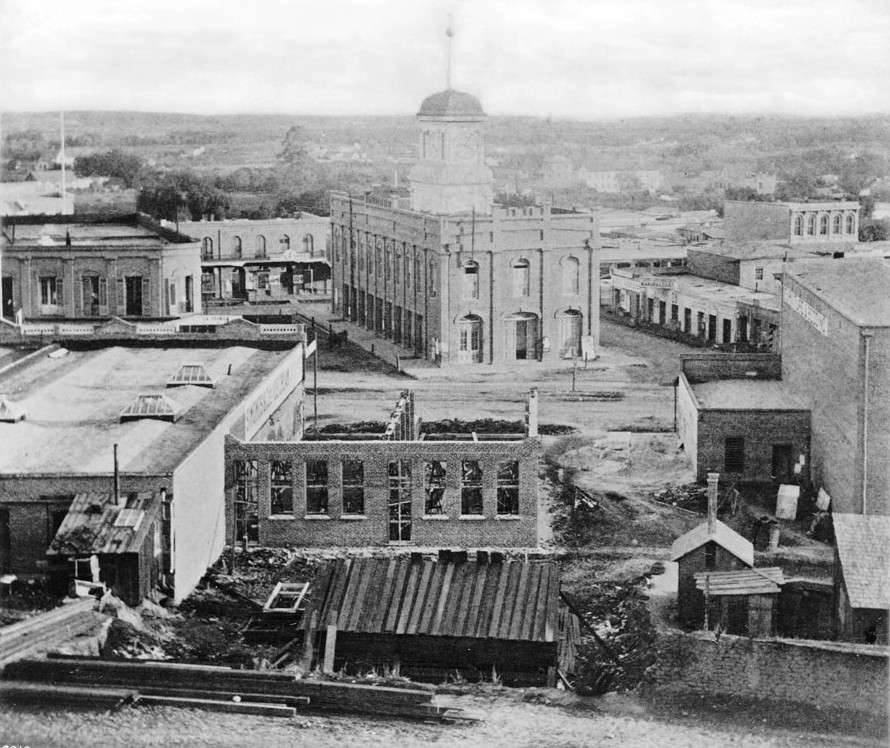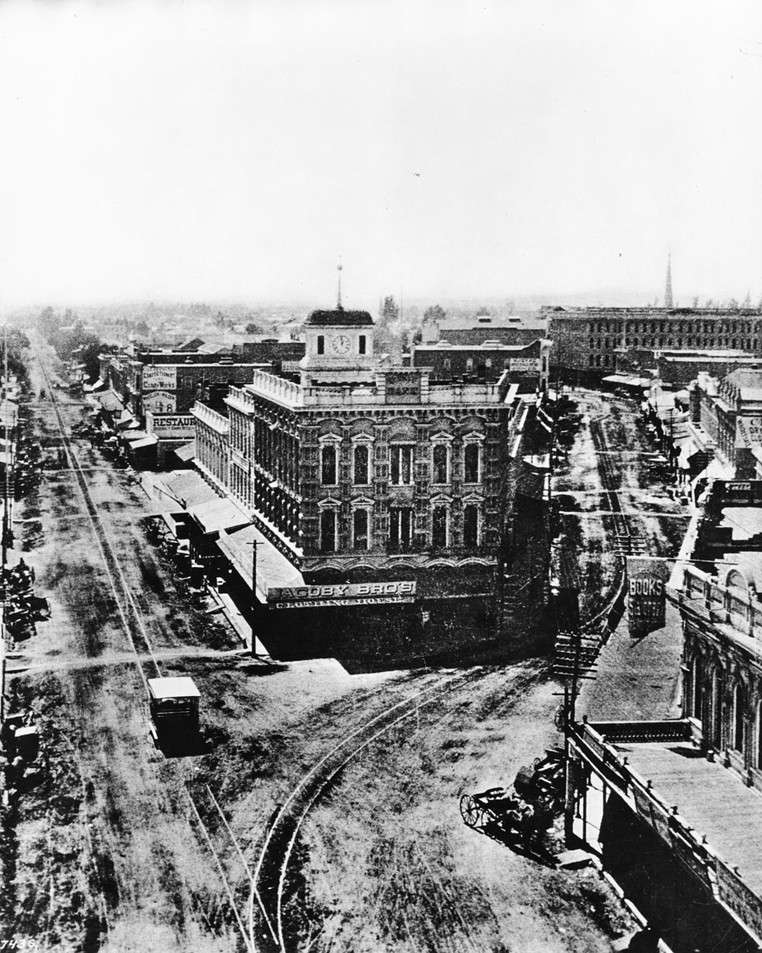Quote:
Originally Posted by ethereal_reality

Built in 1858 as a market, this building became Los Angeles' 1st City Hall.

usc digital archive

usc digital archive

usc digital archive
Around this time, the usc archive starts labeling it the Temple Building.
At first I thought it was just a mistake (there are many photos mislabeled in the archive).

usc digital library
But then I came across this photograph from 1885.

usc archive
So...I take it, the 1st city hall (or court house as it's often labeled)
was, over the years, enveloped by surrounding buildings that eventually
created the Temple block.
Is this correct? |
From LAPL Photo Collection:

I believe there was an earlier, American, city hall located at to the left of this hanging site. This image is the hanging of Michael Lachenais on December 17, 1870. It is looking West from near Spring and Temple towards Fort Hill which ran all the way down to Spring. I believe building on the left housed the first stage services in the city and also the first American city council. Can someone confirm or deny?
This is from Harris Newmark, Sixty Years in Southern California, ch. 4, p.36.
http://memory.loc.gov/cgi-bin/query/...albk023%29%29:
"The administrative officials of both the City and the County had their headquarters in the one-story adobe building at the northwest corner of Franklin Alley (later called Jail Street* ) and Spring Street. In addition to those mentioned, there was a Justice of the Peace, a Zanjero, and a Jailer. António Franco Coronel had but recently succeeded Nichols as Mayor; A. S. Beard was Marshal and Tax Collector; Judge William G. Dryden was Clerk; C. E. Carr was Attorney; Ygnácio Coronel was Assessor; and S. Arbuckle was Treasurer.
[Note : In April, 1872, officially named Franklin Street.]
António Franco Coronel, after whom Coronel Street is named, had just entered upon the duties of Mayor, and was busy enough with the disposal of donation lots when I first commenced to observe Los Angeles' government. He came from Mexico to California with his father, Don Ygnácio F. Coronel; and by 1850 he was the first County Assessor. He lived at what is now Alameda and Seventh streets, and had a brother, Manuel, who was City Assessor in 1858."



